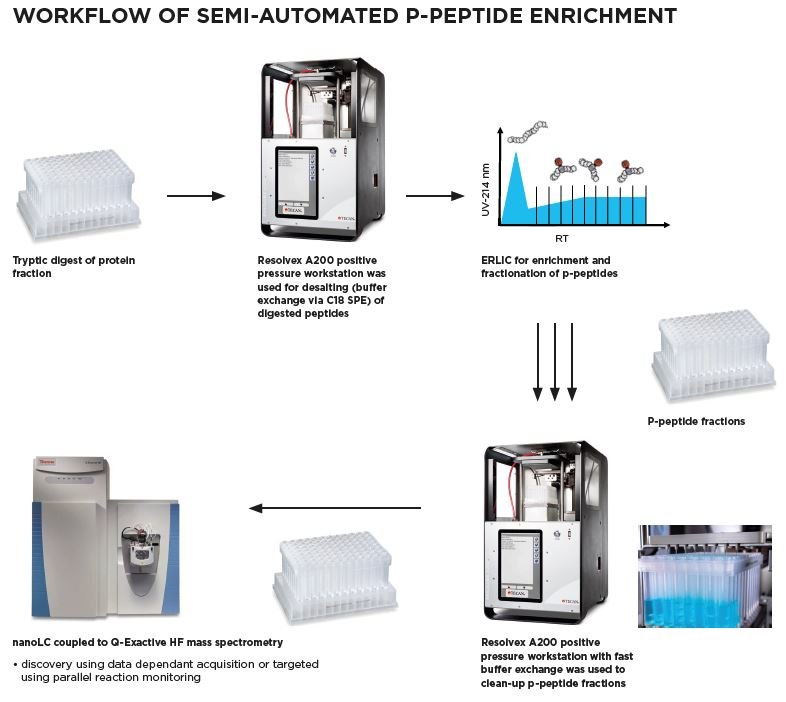Positive pressure as universal tool in sample preparation - Proteomics
Sample preparation is supposed to be precise, rugged and dependable but also easy, fast and automated. The reality in many laboratories often looks entirely different: old-fashioned methods using difficult protocols requiring both, large sample volumes and manual preparation. This reduces the throughput and prevents automation.
Positive pressure workstation Resolvex™ A200 with 8 channel dispenser for automated buffer exchange and programmable pressure profiles for column loading or wash steps (11 different solvents) allows the reproducible processing of 96 well plates.
Positive pressure workstations apply up to 6 bar and provide fast flow rates with pressure control for every single well delivering maximum reproducibility and uniformity across all columns per run and especially from batch to batch. Although positive pressure was developed for SPE sample prep, the technique is applicable as universal tool to prep a liquids through a membrane/sorbent to clean up DNA or cut off proteins for size exclusion, any kind of filtration or to enrich/clean metabolites, peptides and fatty acids from matrix interference.
Fast buffer exchange via automated solvent dispensing for proteomic workflows
With the automated solvent dispensing function of the A200 an easy and fast buffer exchange of protein or peptide fractions are applicable. The positive pressure workstation allows semi-automation of highly sensitive phosphopeptide enrichment via classical C18 SPE from minute amounts of samples (Loroch et al., Anal Chem 2015) without any loss of sensitivity in comparison to the manual workflow.
In comparison, the A200 reduces the lab-time by 1.5 days down to 3–4 hours when processing 96 ERLIC fractions. The system is open for different column types (e.g. HLB Elution plate – Waters) to extend the capacity from low abundant phosphopeptides to high amount of peptide fractions of digested proteins. Actually the integration of the protein extraction and digestion in membrane material are established to realize a complete proteomics workflow.


